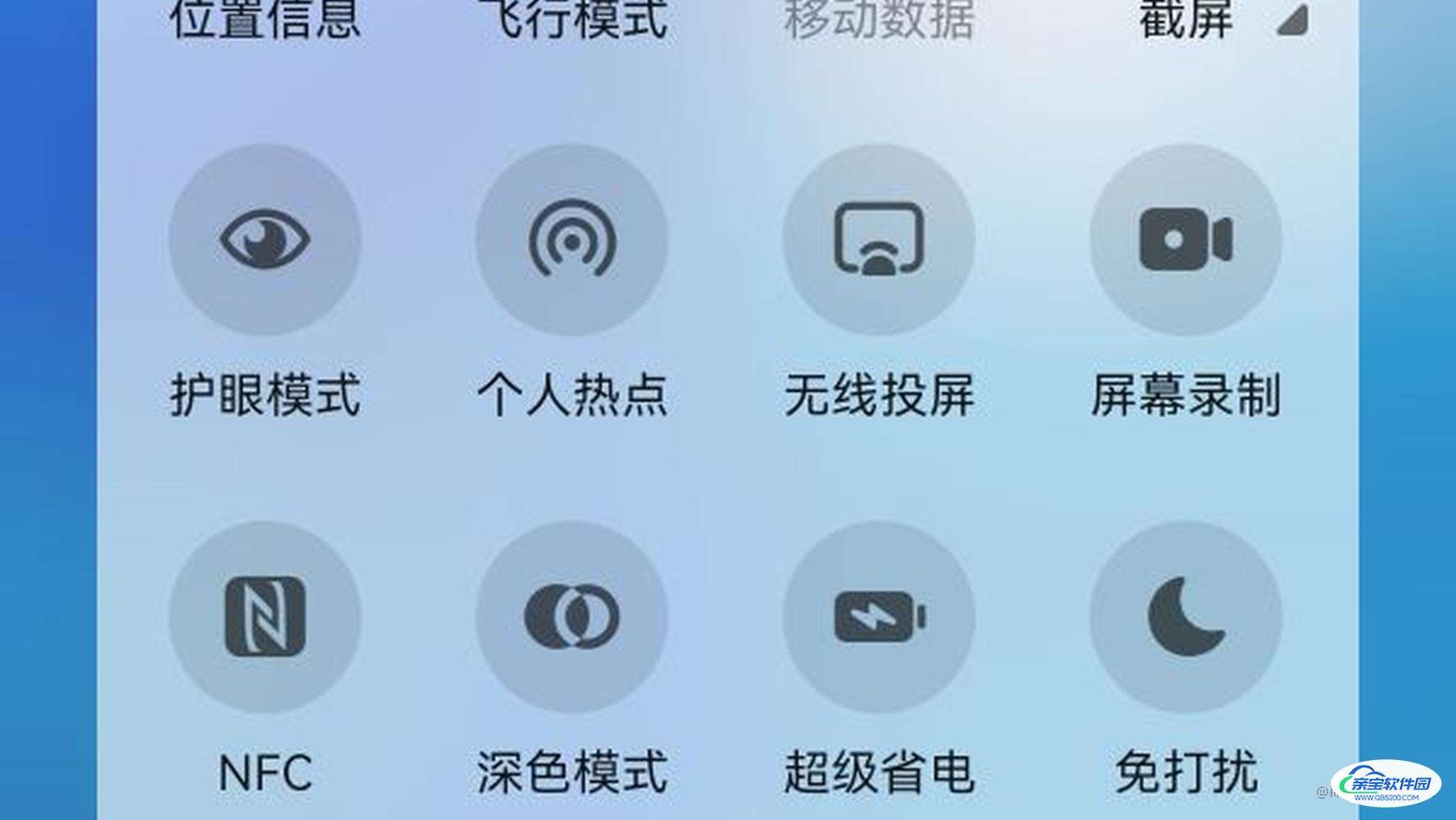Android通知栏增加快捷开关的功能实现教程
度熊君 人气:0
我们通常可以在通知栏上看到“飞行模式”、“移动数据”、“屏幕录制”等开关按钮,这些按钮都属于通知栏上的快捷开关,点击快捷开关可以轻易调用某种系统能力或打开某个应用程序的特定页面。那是否可以在通知栏上自定义一个快捷开关呢?答案是可以的,具体是通过TileService的方案实现。
TileService继承自Service,所以它也是Android的四大组件之一,不过它是一个特殊的组件,开发者不需要手动开启调用,系统可以自动识别并完成调用,系统会通过绑定服务(bindService)的方式调用。
创建使用:
快捷开关是Android 7(target 24)的新能力,因此在使用该能力前必须先判断版本大小(大于等于target 24)。
1、自定义一个TileService类。
class MyQSTileService: TileService() {
override fun onTileAdded() {
super.onTileAdded()
}
override fun onStartListening() {
super.onStartListening()
}
override fun onStopListening() {
super.onStopListening()
}
override fun onClick() {
super.onClick()
}
override fun onTileRemoved() {
super.onTileRemoved()
}
}TileService是通过绑定服务(bindService)的方式被调用的,因此,绑定服务生命周期包含的四种典型的回调方法(onCreate()、onBind()、onUnbind()和 onDestroy())都会被调用。但是,TileService也包含了以下特殊的生命周期回调方法:
- onTileAdded():当用户从编辑栏添加快捷开关到通知栏的快速设置中会调用。
- onTileRemoved():当用户从通知栏的快速设置移除快捷开关时调用。
- onClick():当用户点击快捷开关时调用。
- onStartListening():当用户打开通知栏的快速设置时调用。当快捷开关并没有从编辑栏拖到设置栏中不会调用。在TileAdded添加之后会调用一次。
- onStopListening():当用户打开通知栏的快速设置时调用。当快捷开关并没有从编辑栏拖到设置栏中不会调用。在TileRemoved移除之前会调用一次。
2、在应用程序的清单文件中声明TileService。
<service
android:name=".MyQSTileService"
android:label="@string/my_default_tile_label"
android:icon="@drawable/my_default_icon_label"
android:exported="true"
android:permission="android.permission.BIND_QUICK_SETTINGS_TILE">
<intent-filter>
<action android:name="android.service.quicksettings.action.QS_TILE" />
</intent-filter>
</service>- name:自定义的
TileService的类名。 - label:快捷开关在通知栏上显示的名称。
- icon:快捷开关在通知栏上显示的图标。
- exported:该服务能否被外部应用调用。该属性必须为true。如果为false,那么快捷开关的功能将失效,原因是exported="false"时,
TileService将不支持外部应用调起,手机系统自然不能再和该快捷开关交互。必须配置。 - permission:需要给service配置的权限,BIND_QUICK_SETTINGS_TILE即允许应用程序绑定到第三方快速设置。必须配置。
- intent-filter:意图过滤器,只有匹配内部的action,才能调起该service。必须配置。
监听模式
TileService的监听模式(或理解为启动模式)有两种,一种是主动模式,另一种是标准模式。
- 主动模式
在主动模式下,TileService被请求时该服务会被绑定,并且TileService的onStartListening也会被调用。该模式需要在AndroidManifeast清单文件中声明:
<service ...>
<meta-data android:name="android.service.quicksettings.ACTIVE_TILE"
android:value="true" />
...
</service>通过TileService.requestListeningState()这一静态方法,就可以实现对TileService的请求,示例如下:
TileService.requestListeningState(
applicationContext, ComponentName(
BuildConfig.APPLICATION_ID,
MyQSTileService::class.java.name
)
)主动模式下值得注意的是:
- 用户在通知栏快速设置的地方点击快捷开关时,TileService会自动完成绑定、TileService的onStartListening会被调用。
- TileService无论是通过点击被绑定还是通过requestListeningState请求被绑定,TileService所在的进程都会被调起。
标准模式
在标准模式下,TileService可见时(即用户下拉通知栏看见快捷开关)该服务会被绑定,并且TileService的onStartListening也会被调用。标准模式不需要在AndroidManifeast清单文件中进行额外的声明,默认就是标准模式。
标准模式下值得注意的是:
- 和主动模式相同,TileService被绑定时,TileService所在的进程就会被调起。
- 而和主动模式不同的是,标准模式绑定TileService是通过用户下拉通知栏实现的,这意味着TileService所在的进程会被多次调起。因此为了避免主进程被频繁调起、避免DAU等数据统计受到影响,我们还需要为TileService指定一个特定的子进程,在Androidmanifest清单文件中设置:
<service
......
android:process="自定义子进程的名称">
......
</service>更新快捷开关
如果需要对快捷开关的数据进行更新,可以通过getQsTile()获取快捷开关的对象,然后通过setIcon(更新icon)、setLable(更新名称)、setState(更新状态,包括STATE_ACTIVE——表示开启或启用状态、STATE_INACTIVE——表示关闭或暂停状态、STATE_UNAVAILABLE:表示暂时不可用状态,在此状态下,用户无法与您的磁贴交互)等方法设置快捷开关新的数据,最后调用updateTile()方法实现。
override fun onStartListening() {
super.onStartListening()
if (qsTile.state === Tile.STATE_ACTIVE) {
qsTile.label = "inactive"
qsTile.icon = Icon.createWithResource(context, R.drawable.inactive)
qsTile.state = Tile.STATE_INACTIVE
} else {
qsTile.label = "active"
qsTile.icon = Icon.createWithResource(context, R.drawable.active)
qsTile.state = Tile.STATE_ACTIVE
}
qsTile.updateTile()
}操作快捷开关
- 如果想要实现点击快捷开关时、关闭通知栏并跳转到某个页面,可以调用以下方法:
startActivityAndCollapse(Intent intent)
- 如果想要在点击快捷开关时弹出对话框进行交互,可以调用以下方法:
override fun onClick() {
super.onClick()
if(!isLocked()) {
showDialog()
}
}因为快捷开关有可能在用户锁屏时出现,所以必须加上isLocked()的判断。只有非锁屏的情况下,对话框才会出现。
- 如果快捷开关含有敏感信息,需要使用isSecure()进行设备安全性判断,当设备安全时,才能执行快捷开关相关的逻辑(如点击的逻辑)。当设备不安全时(手机处于锁屏状态时),可调用unlockAndRun(Runnable runnable),提示用户解锁屏幕并执行自定义的runnable操作。
总结
加载全部内容